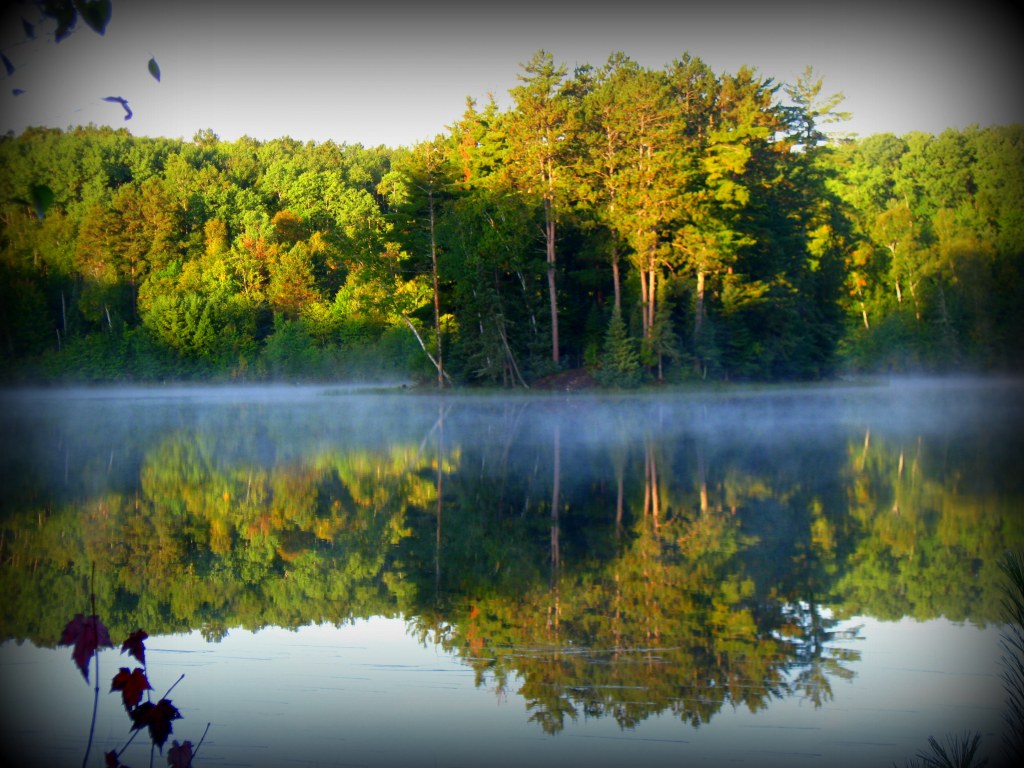Federal Government to Return (Some) Stolen Lands to the Leech Lake Band of Ojibwe
(cross-posted from Scott Russell at Healing Minnesota Stories blog)
The Leech Lake Band of Ojibwe holds less of its original reservation lands than any other Ojibwe tribe in Minnesota. In fact, Leech Lake suffered more land loss than most other reservations in the United States due the efforts by lumber barons to get their hands on the band’s prized timber lands.
The federal government has a trust responsibility to Native Americans. Historically, it deemed Native American “incompetent” to manage their own affairs. The government was supposed to protect Native nations and their lands from fraud and abuse. In fact, the government actively participated in undermining treaty obligations and facilitated land sell-offs to private business interests.
This year, Congress approved a bill to return some 17 square miles to the Leech Lake Band of Ojibwe, lands that had been “wrongly transferred” to the Chippewa National Forest, according to the Pioneer Press.
 Chippewa National Forest. Source: U.S. Dept. of Agriculture.
Chippewa National Forest. Source: U.S. Dept. of Agriculture.
A Leech Lake tribal news release said: “The land restoration is the culmination of years of effort and will honor tribal sovereignty, allowing the Leech Lake Band of Ojibwe to invest in future generations and build more housing to accommodate their community.”
This is not charity. This is justice.
This is an act to be celebrated and a history to be mourned. While 17 square miles might seem like a lot, it’s a very small measure of repair given the amount of land stolen under the federal Dawes, Nelson, Morris, and Burke Acts of the late 1800s and early 1900s.
This fall, the Minnesota Council of Churches announced a multi-year effort at truth telling, education, and reparations with Indigenous and African American communities. Healing Minnesota Stories is an initiative of the Council, so this seems like a good opportunity to look deeper into the story of land theft from Native nations by Minnesota and the federal government.
 The overlap of Leech Lake Reservation boundaries and the Chippewa National Forest. (Source: U.S. Dept. of Agriculture)
The overlap of Leech Lake Reservation boundaries and the Chippewa National Forest. (Source: U.S. Dept. of Agriculture)A couple of quick facts for perspective:
- First called the Minnesota Forest Reserve, the Chippewa National Forest initially covered 350 square miles
- The Chippewa National Forest now covers more than 1,000 square miles
- Nearly half of the Chippewa National Forest falls within the historical boundaries of the Leech Lake Reservation
- The bill that just passed Congress would return 17 square miles to the Leech Lake Band
U.S. Sen. Tina Smith and state Rep. Betty McCollum sponsored the Leech Lake Reservation Restoration Act. It now awaits the President’s signature.
The bill itself doesn’t provide much context for this act of repair. With bureaucratic evasiveness, it refers to problems that occurred in the late 1940s and 1950s.
… the Bureau of Indian Affairs incorrectly interpreted an order of the Secretary of the Interior to mean that the Department of the Interior had the authority to sell tribal allotments without the consent of a majority of the rightful landowners …
Leech Lake Band of Ojibwe Reservation Restoration Act
It makes it sound like a clerical error.
To fully understand the extent of land theft from Leech Lake, one needs to go back to the late 1800s and early 1900s.
First, some clarity on names. In Minnesota, Chippewa, Ojibwe and Anishinaabe all refer to the same people. “Chippewa” and “Ojibwe” are names white settlers gave to the Anishinaabe people of the area. “Chippewa” and “Ojibwe” continue to get used in part because those are the official legal names used for reservations and in treaties.
Look at the map above and you would think Leech Lake has a fair amount of land. In fact, Leech Lake and individual Leech Lake members own only 4 percent of the lands within the original boundaries of its reservation, said Cris Stainbrook, President of the Indian Land Tenure Foundation.
Stainbrook spoke to Healing Minnesota Stories in 2015 and gave an overview of Native American land losses.
Prior to the arrival of white setters, the Dakota and Ojibwe occupied all 51 million acres of what is now Minnesota, he said. By the time the Treaty Period ended in 1871, lands controlled by Native nations in Minnesota dropped by more than 95 percent to 2.1 million acres.
The Dawes Act of 1877 contributed to more Indian land losses in Minnesota and nationally.
The Dawes Act forced individual land ownership on Indians to whom it was a foreign concept, one of many assimilation policies.
The Dawes Act broke reservation lands into individual parcels, or allotments. It gave family heads their own parcels, typically 80-160 acres. Once all the family allotments were carved out of the reservation, any remaining reservation lands were declared “in excess” of Indian needs.
That’s like a school bully declaring that your lunch tray has “excess” food and taking your sandwich. Only a lot worse.
Congress passed the Nelson Act in 1889, Minnesota’s version of the Dawes Act. It was named for Minnesota Congressman Knute Nelson (more on Nelson here). After its passage, Indian land ownership in Minnesota would drop by another 700,000 acres to 1.4 million acres, Stainbrook said.
The Indians were supposed to get the benefits of the timber harvesting on these excess lands. They did not. The federal government failed in its trust obligations.
 Knute Nelson, namesake of the Nelson Act, served as both a U.S. Congressman and Governor of Minnesota. He’s honored with a statue in front of the State Capitol. It should be removed.
Knute Nelson, namesake of the Nelson Act, served as both a U.S. Congressman and Governor of Minnesota. He’s honored with a statue in front of the State Capitol. It should be removed.Leech Lake Band of Ojibwe families received only 80-acre allotments under the Nelson Act, according to Leech Lake’s website. It continues:
The remainder of the non-allotted Indian lands were then opened up and sold or granted to timber companies, railroads and settlers. With the passage of the Nelson Act, loggers were able to move onto the land, and within a couple of years clear cutting was in full progress.
It should be noted, that with the passage of the Nelson Act, the state of Minnesota now claimed that tribal members were now subject to state hunting and fishing laws. No longer could tribal members hunt, fish, or gather on the Leech Lake Reservation as promised by the numerous treaties they had previously negotiated.
Another unforeseen problem was, allotments were to be held in trust for twenty five (25) years, upon which, Indians were then given a fee patent. As a result, most Indians lost their allotments through tax forfeitures, sales and/or fraud.
Leech Lake Band of Ojibwe website
An article in the Minnesota History magazine, MINNESOTA NATIONAL FOREST: The Politics of Compromise, 1889-1908, provides more details.
An Interior Department report disclosed that the Nelson Law “failed to secure to the Indians the largest benefit from the sale of the pine and agricultural lands.” … An “examination of the reports . . will convince anyone that great frauds were committed.”
Efforts to amend the Nelson Act set off a heated debate between timber interests and white progressives — led by the Minnesota Coalition of Women’s Clubs — who pushed for forest designation to protect the “excess” lands stripped from Leech Lake.
According the Minnesota History Magazine article:
As pressures mounted against the Nelson Law, the idea took root that a national park should encompass the reservation. The park, adherents hoped, might solve the problem of the Indians, their lands, and their timber in one masterful stroke.
The Morris Act of 1902 — named for a U.S. Congressman Page Morris of Duluth — was the “compromise” to fix the Nelson Act (but a compromise that did not include Leech Lake). The bill “helped the big timber companies get access to a lot of timber in Minnesota on Indian land, but it also set aside a big chunk of land around Leech Lake as the Minnesota Forest Reserve,” according to Why Treaties Matter.
Competency Commissions
The Dawes, Nelson, and Morris acts were not the only government-backed land swindle. Another tactic was “Competency Commissions,” Stainbrook said.
In 1906, Congress passed the Burke Act allowing the Secretary of the Interior to declare Indians “competent” under certain circumstances. Importantly, Indians didn’t need to apply. The Secretary could declare individuals “competent” without their approval or even their knowledge.
This had devastating impacts on Indian land ownership, Stainbrook said.
The government sent out competency commissions to various reservations. One of ways Indians were deemed “competent” was by joining the military. In Minnesota, Indian men signed up for service in World War I at a high rate. Without knowing it, their service deemed them competent to own their own land.
Once declared “competent,” Indian soldiers’ lands went from being held in tax-free federal trust onto the local property tax rolls. While the Native men were fighting oversees, their lands would become tax delinquent. They would come home from the war and their land had become tax forfeited and sold at auction.
Big chunks of land were lost to tax forfeiture, Stainbrook said.
For more, here’s a summary of Stainbrook’s 2015 presentation to Healing Minnesota Stories.



